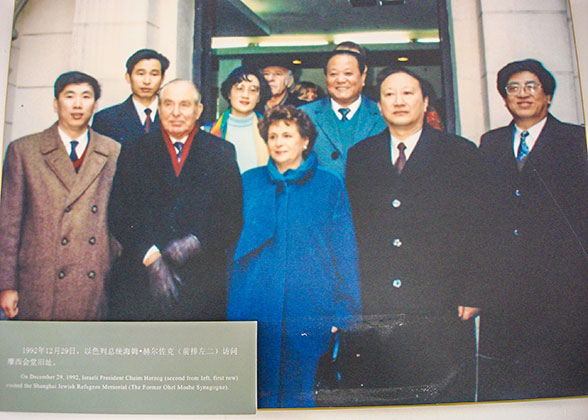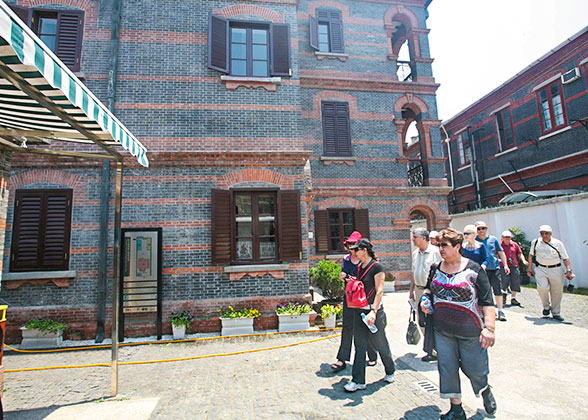Jewish Refugees' Shanghai Affection
 |
| Former Israeli President Chaim Herzog visited the museum |
Since China introduced the reform and opening-up policies, many Shanghai Jews returned to visit friends, seek roots and reunite with their former neighbor. Stroll in Hongkou, the Bund and Nanjing Lu, they are so excited to see the transformation of the city. More and more Jewish visitors would like to visit Shanghai Jewish Refugees Museum, including the brick houses once the Jews lived in. At sight of the familiar place, many Jewish seniors were on the verge of tears. To the kind help the local people offered several decades ago, they always remain thankful.
Sarah, a Russian Jew who lived in Shanghai for ten years during the Second World War, heartily admired the kindness and tolerance of Chinese people. Early in 1916, due to the serious Anti-Semitism in Siberia, her family had to move to Harbin for shelter. During Japan's aggression to China, because of the economic depression, she had to seek fortune to Shanghai with her husband. After a ten-year life in this city, they returned to Israel in 1949.
 |
| Tourists visit Shanghai Jewish Refugees Museum |
"I bear bright emotion to China, for my husband and my son were born there, and my parents-in-law were buried there. I have spent my finest hours in China. Chinese people, being educated or not, always remain polite and helpful. They treat everybody alike. From the bottom of my heart, I take China as my second hometown." Sarah said with tears stand in her eyes.
Today, the fast city construction in Shanghai almost made the old city districts lay flat at one night. But one piece of land has survived, that is Tilanqiao, the "Small Vienna" where the Jews once lived in. Considering the value of protecting the cultural relics, the local government keeps it away from the destruction of modern construction. Currently, more and more Jews of new generation continuously pay visits to the places where their forefathers once lived in. They are very grateful to see the old buildings are well kept. Many of them will invest in the city, and some advice to build a shopping and entertainment zone in typical Jewish style in the area. Shanghai, is still the bridge to connect the development of friendship between Chinese people and the Jews.
- Last updated on Feb. 08, 2024 by Kate Liu -